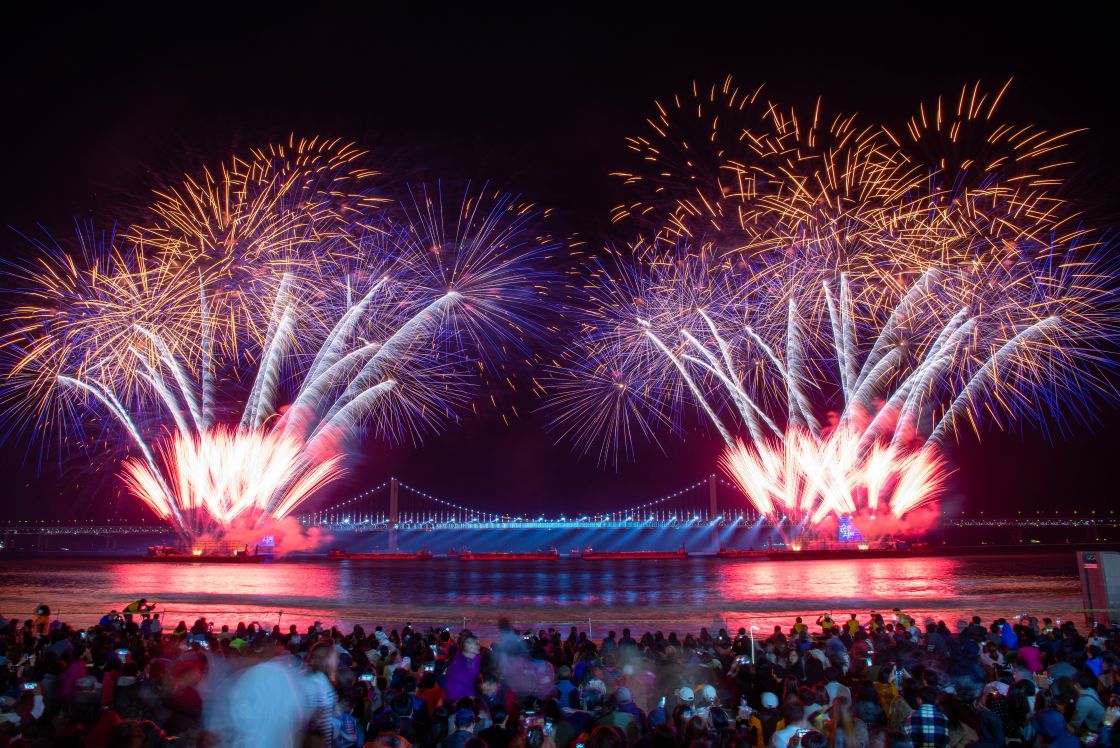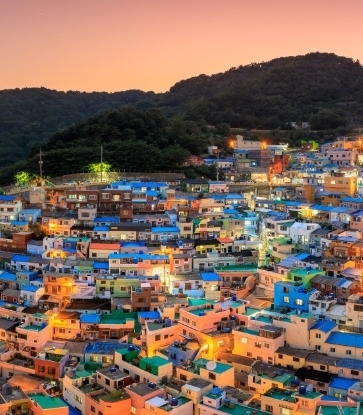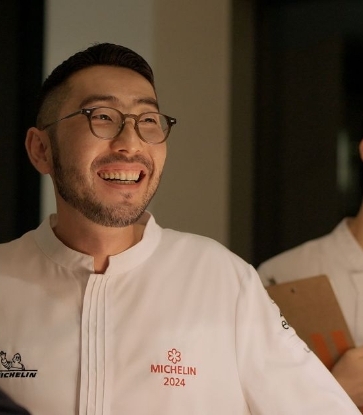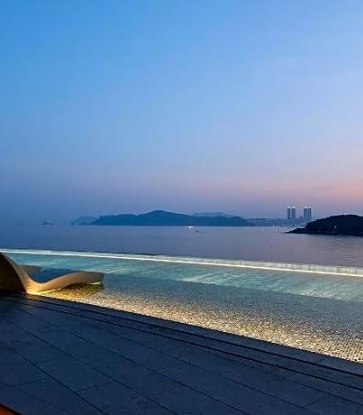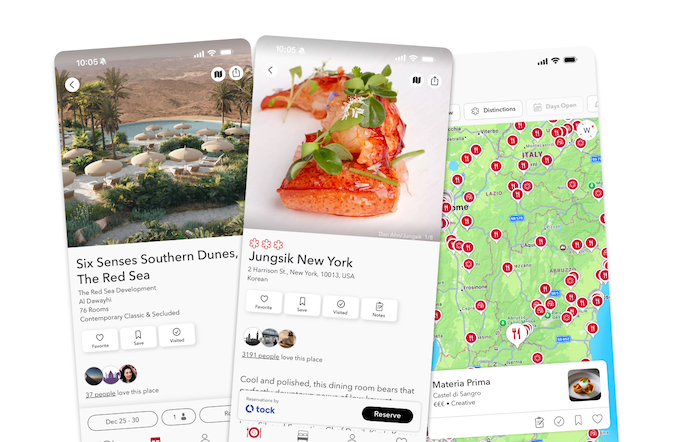The fireworks that light up Busan’s night sky are more than a spectacle — they form a stage where sea, city and people converge. Each autumn, the Busan Fireworks Festival unfolds across the backdrop of Gwangandaegyo Bridge, drawing more than a million spectators to South Korea’s largest port city and underscoring its cosmopolitan appeal.
This year’s 20th edition will take place on Saturday, November 15, 2025, at 7 p.m. along Gwangalli Beach. For one radiant hour, the show will etch itself into memory as fireworks sharpen the silhouette of the city’s skyline.
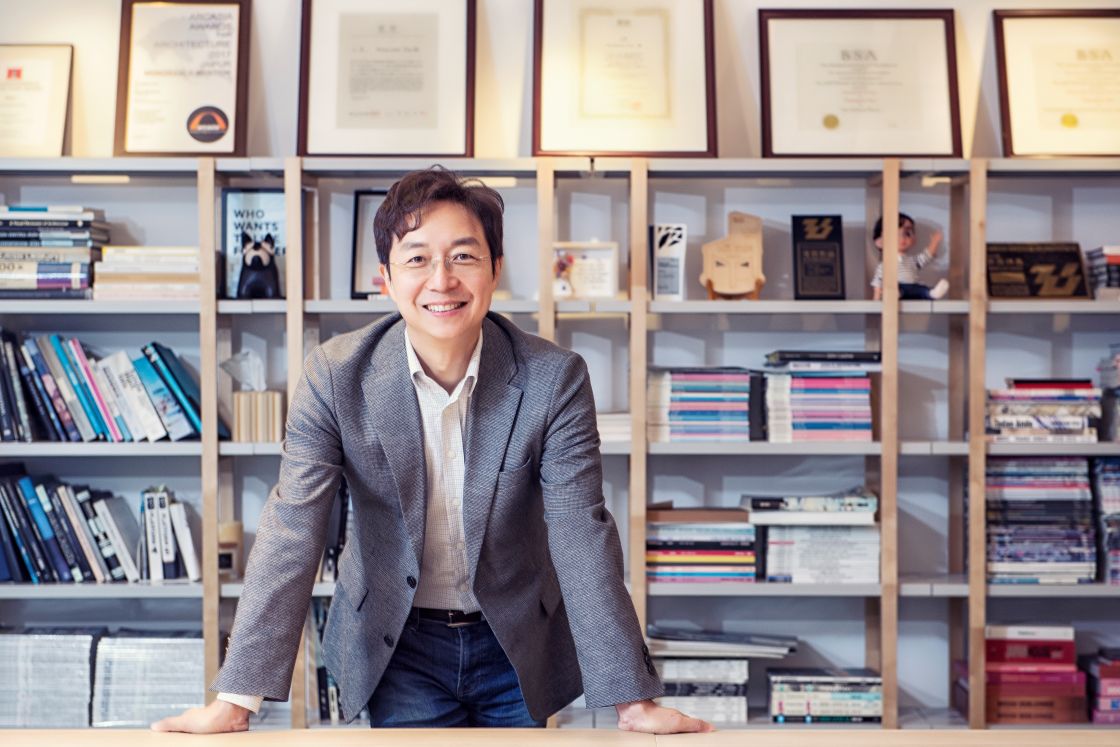
Architect Hyunjoon Yoo, who leads the Seoul-based Hyunjoon Yoo Architects and teaches at Hongik University, studied at MIT and Harvard before returning to Korea, where he bridges academia and practice. Best known to the wider public through his bestselling books, popular lectures and YouTube channel, Yoo has also visited Busan many times to speak, reflecting deeply on its urban development and future.
Before setting off on another trip to Busan, Yoo sat down with The MICHELIN Guide to reflect on the port city — its layered history, its present identity and the horizons that come into view as the Fireworks Festival approaches.
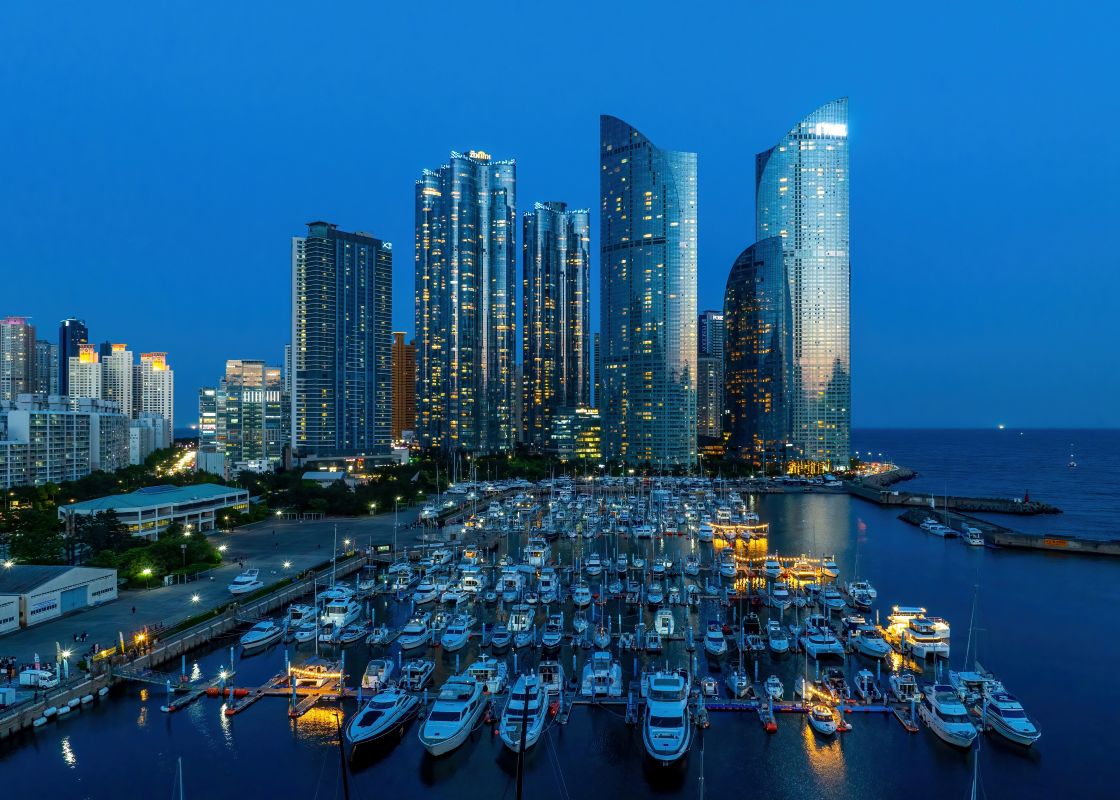
Past: Birth of Korea’s first metropolis
The melting pot and a bowl of milmyeon
Yoo believe Busan is Korea's first modern city. “Density is what drives a city’s commercial growth,” Yoo begins. “Jobs diversify, and industries branch out. By that measure, I think Busan was Korea’s first true case of an advanced commercial city.The Korean War brought a sudden surge of people here, and another hallmark of a metropolis is that it must be multicultural. Different cultural groups have to come together, mix and create something new — a kind of hybrid culture. Busan is a prime example of that.”He continues, “During the war, people from Hamgyeong, Pyeongan, Jeolla and Gangwon Provinces all converged on this small space called Busan. Out of that, a new culture emerged. Milmyeon are the perfect example. Buckwheat was scarce, so people made noodles with flour from rations instead, and something entirely new was created. That makes Busan a very special city.”
Born in the 1950s out of the inability to make naengmyeon, or cold buckwheat noodles, milmyeon went on to become one of Busan’s signature dishes. The city now has its fair share of popular naengmyeon places and not just serving milmyeon. Three noodle houses are listed in The MICHELIN Guide selection: Damiok, 100.1 Pyeongnaeng, and Buda Myeonoak. All three have also been awarded the Bib Gourmand distinction, which recognizes restaurants that offer excellent cooking at moderate prices.
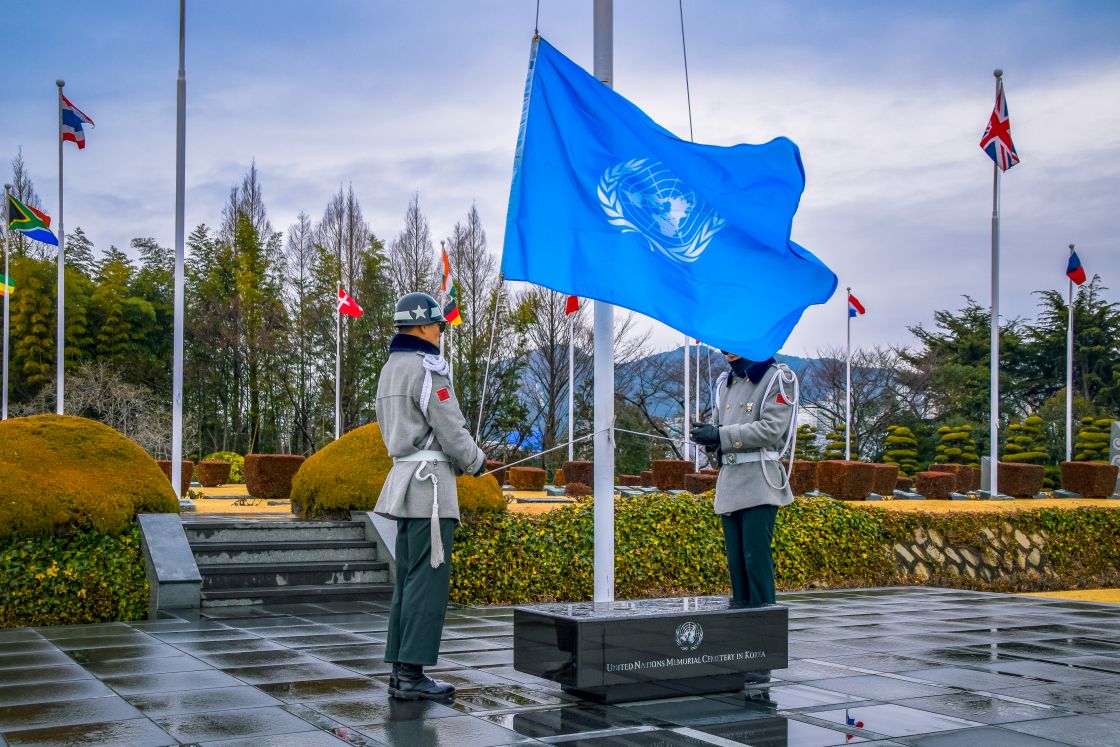
Gateway of democracy and international culture
Busan has long been a point of convergence — not only for diverse local cultures, but also on an international scale.“Commerce flourished, and the forces of democracy also arrived here by sea — which made Busan their first port of call,” Yoo says. “During the Korean War, UN troops landed in Busan. The fact that the UN Memorial Cemetery is here tells you something important about this city. That makes Busan very special in architectural and urban terms.”
At the heart of the city, surrounded by manicured greenery, lies the UN Memorial Cemetery in Korea (UNMCK) — a site that preserves the memory of the Korean War. Though less present in global memory than the Vietnam War, the Korean War claimed more than 3 million lives according to the U.S. Department of Defense.
The UN Memorial serves as a rare international tribute to that sacrifice. It is the only official UN-designated cemetery in the world, where the fallen soldiers of 11 nations, including the United States, the United Kingdom, Canada and France, are laid to rest. Walking along its quiet paths, one encounters a place where Busan’s modern history is remembered.
Busan’s openness is also geographic. From the port, Japan is a 100 km closer by sea than Jeju Island, located 300 km away. This proximity shaped the city’s cultural outlook.
However, Japanese cultural imports — from films and television to pop music and manga — were largely banned in Korea until the late 1990s. This was a legacy of the Japanese colonial period (1910-1945), which left a deep and often painful imprint on Korean society. Nevertheless, Busan’s proximity to Japan made it one of the few places where people felt they could glimpse that culture despite the restrictions.
“Even during the 1980s, when Japanese culture was taboo, Busan was like a cultural free zone. With a satellite dish, you could pick up NHK. In that sense, Busan was always ahead, more open culturally than anywhere else,” Yoo says.
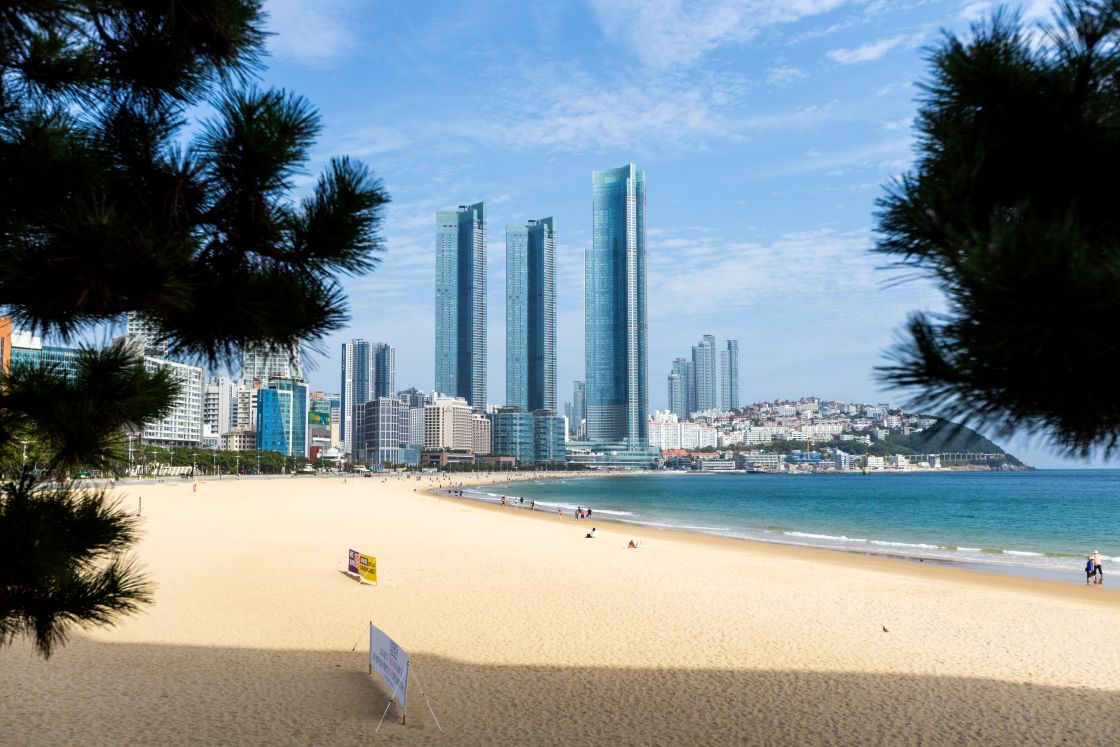
Present: A cityscape between mountain and sea
“Busan is a city where the mountains meet the sea,” Yoo explains. “It’s steep, narrow and stretched along the coastline — that’s unusual. The real charm is that these bustling alleys are pressed right up against beaches like Haeundae and Gwangalli.”
He continues, “I often say Busan feels like a mix between Hong Kong and Waikiki. Hong Kong is dense but lacks beaches, while Waikiki has beaches but isn’t a dense city. Busan combines both — the vibrant alleys of Hong Kong with the waterfront of Waikiki.”
Haeundae
In Busan, beaches and boulevards exist side by side, with Haeundae at the heart of it all. Yoo says he enjoys the rhythm of daily life around Haeundae Beach. At its eastern end, near Mipo Port, the professor often stops at the popular restaurant Sok Ssiwonhan Daegutang (not to be confused with the similarly named Soksiwonhan Daegutang) for a steaming bowl of codfish soup before strolling up Dalmaji-gil, a hillside road lined with galleries and cafés. Among them are two One-MICHELIN-Star restaurants, Palate and Fiotto.Following the shoreline in the other direction leads to the Westin Josun Busan, a MICHELIN-selected hotel renowned for its ocean views. Yoo often visits the lobby lounge on the first floor, which opens directly onto the beach. The hotel is also considered one of the city’s prime spots to take in the fireworks.
For dessert, he recommends the Voila Café Busan Haeundae Marine City, where the signature salted ice cream makes a refreshing finish after a seaside stroll.

Gwangalli
The Busan Fireworks Festival bursts into the night sky each year around Gwangalli Beach, and Yoo points to two addresses also featured in The MICHELIN Guide: Eonyang Bulgogi Busanjip and Park Hyatt Busan.
At Busanjip, diners can look out over the waterfront while savoring Eonyang-style bulgogi — beef grilled over charcoal, with a smoky intensity that sets it apart from the sweet, broth-based Seoul-style bulgogi.
Meanwhile, the 30th-floor Sky Lounge at the Park Hyatt Busan offers one of the city’s finest panoramas, where cocktails are paired with sweeping views of Gwangandaegyo Bridge, Haeundae Beach, and, during the festival, fireworks cascading over the sea.
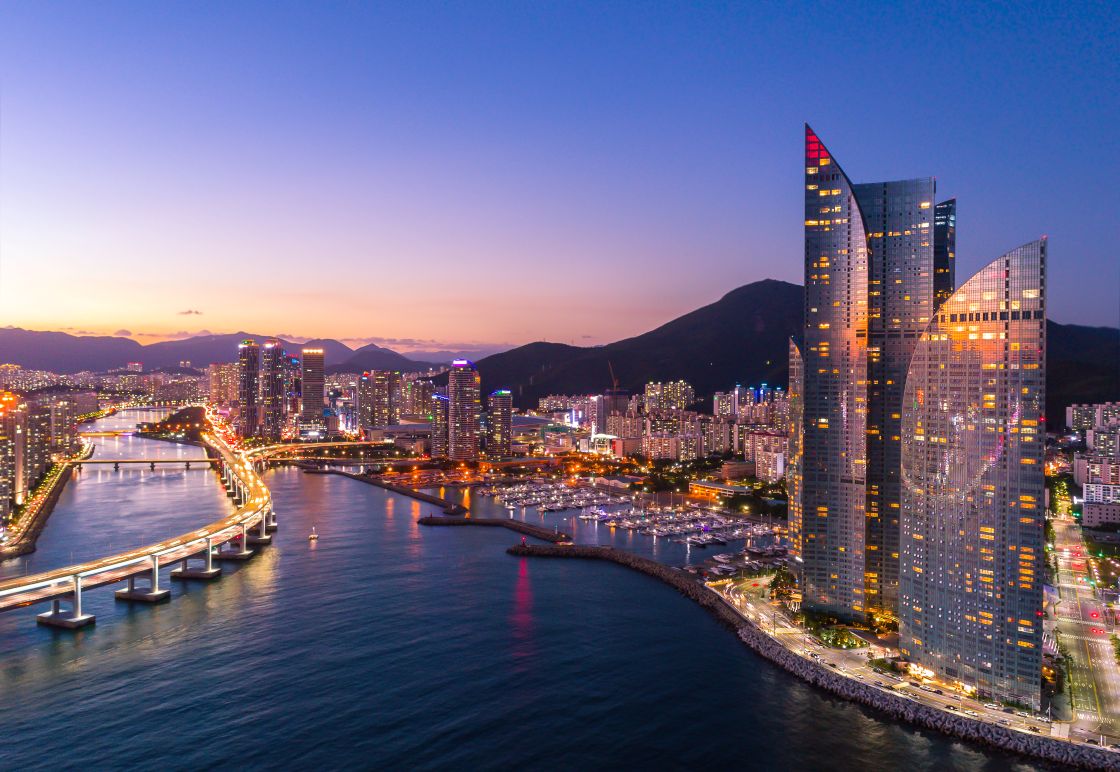
Future: Toward new horizons
Connecting people and spaces
Looking ahead, Yoo reflects on the challenges Busan faces as it adapts to a changing global economy.
“The speed of capital is changing everything,” Yoo notes. “Manufacturing has moved overseas to Southeast Asia and China, and Busan has lost many of its factories — along with jobs and vitality.”
Density alone, he stresses, is not enough to sustain a city. “What matters is how people connect. Public parks, community spaces, and amenities all play a role. Busan is short on land, but one advantage is that the Busan Port Authority owns large stretches of waterfront. If developed wisely, that land could lift the city to another level.”
“How Busan differentiates its waterfront will be crucial,” he adds. “If the city gets it right, it could become a place like no other.”
Yoo suggests that logistics could be shifted underground, handled by autonomous systems, easing traffic above ground and improving the environment. On the city’s steep slopes, escalators — like those in Hong Kong — could link subway stations with hillside neighborhoods, encouraging people to use public transport.
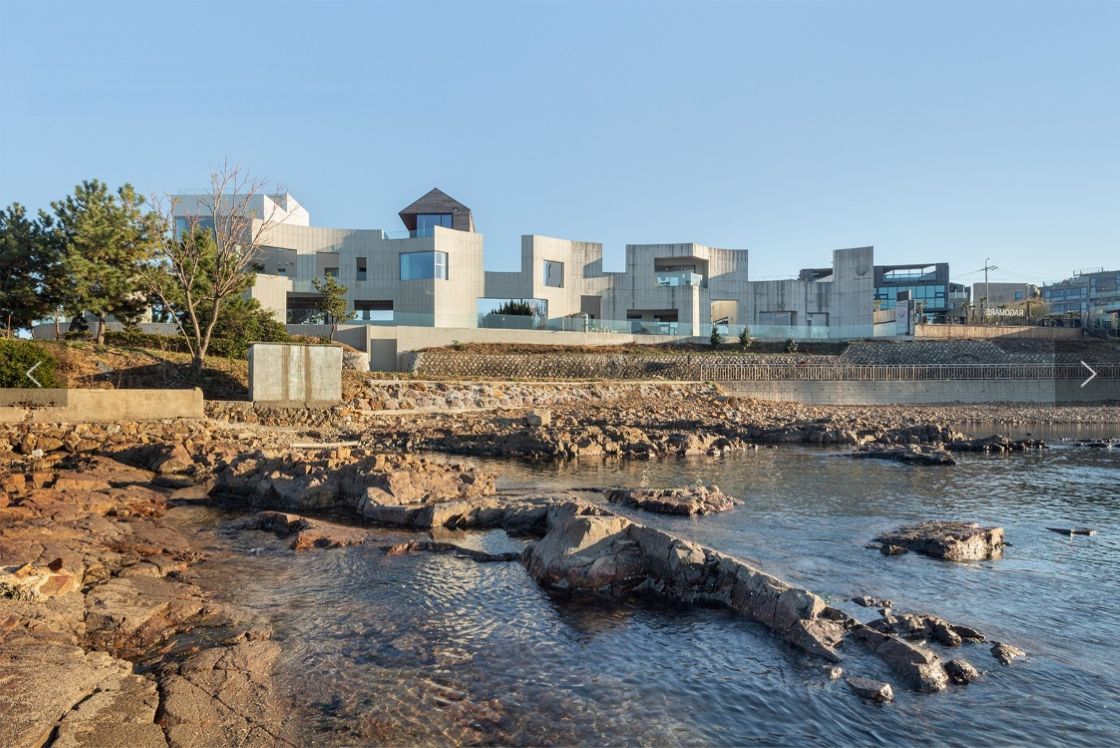
Designing for community
Yoo’s own project in Busan’s Gijang area, RoLowa Mansion, embodies his philosophy. “Buildings on the shore usually face the sea, but then every view looks the same,” he says. “And if it is a café or such, only paying customers can enjoy it. I wanted something more like a village — where people can walk through the site, take the outdoor stairs down to the beach, and encounter different views at each turn.”
Another hallmark of the project is a vast wave-shaped wall, known as Wind Fence, which connects separate structures now used for weddings and events. Inspired by the Bulgarian-born land artist Christo Javacheff, the wall captures the movement of the wind and casts shifting shadows depending on the sun’s position.
“The idea was to let people feel the wind’s presence,” says Yoo. “Depending on where you stand, the relationship between people and space constantly changes.”
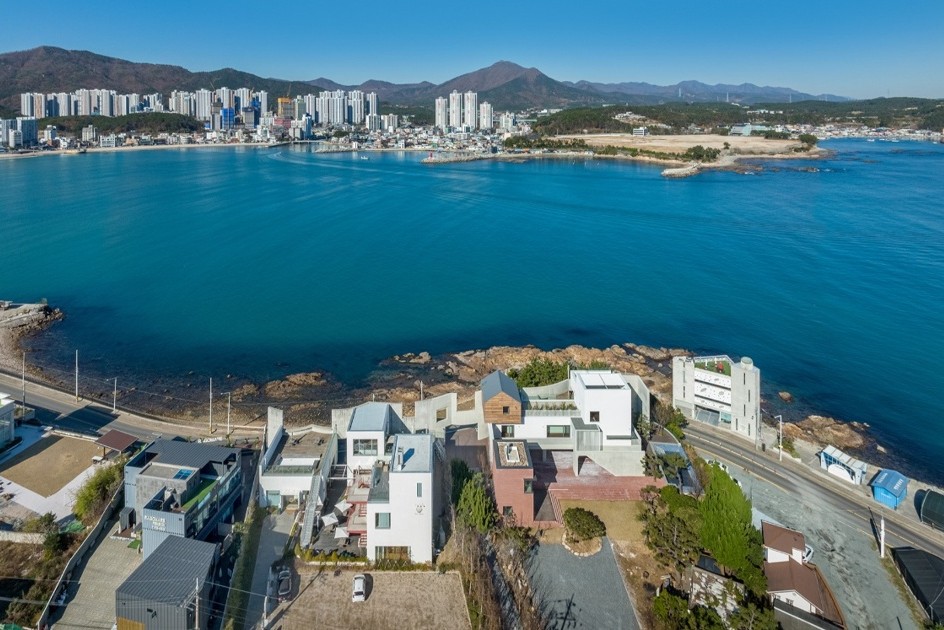
This project was shortlisted at the World Architecture Festival (WAF), won a German Design Award (GDA), and received an Honorable Mention at the Architecture MasterPrize (AMP).
Looking outward
For Busan to thrive globally, Yoo believes it must advance not only in hardware but also in software.“If Busan adjusted its tax system to an international scale like Singapore, it would attract foreign capital and financial companies. And if national schools here adopted English as a compulsory language, young people could work for those foreign companies. That would draw more firms to Busan.”
“Busan has limitless potential,” he adds. “It’s a city I truly love, and I hope it flourishes even more in the years to come.”
